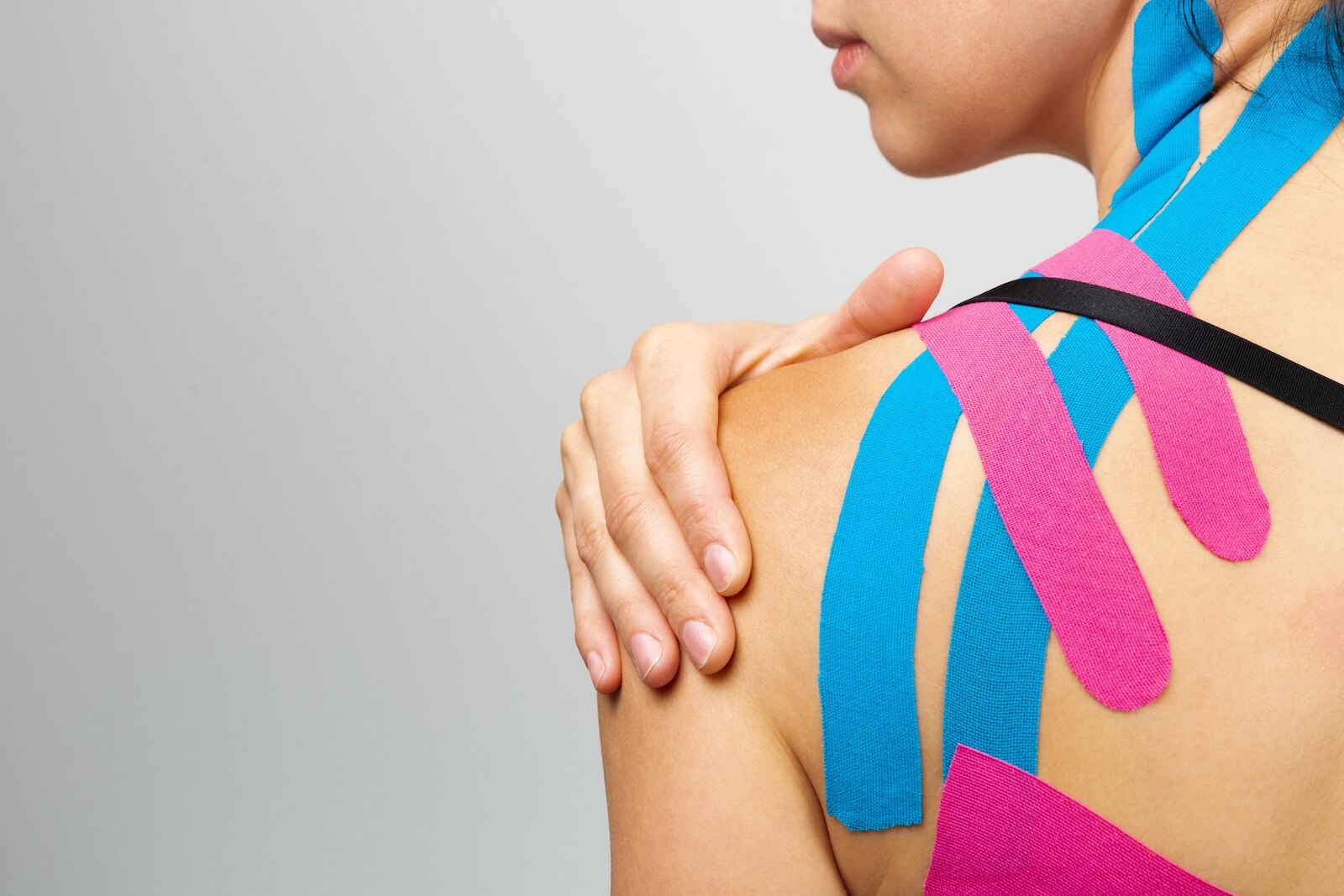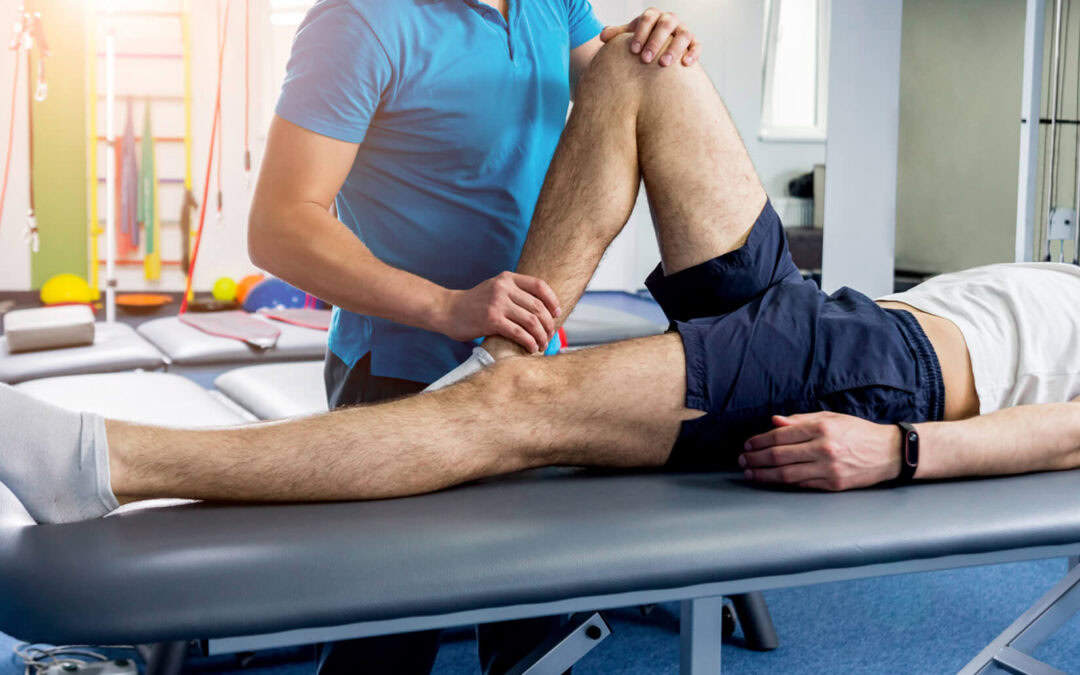Kinesiology Tape, or “K-Tape,” has become a popular form of therapy among athletes, physical therapists, and those seeking pain relief. K-Tape’s unique design and elastic capabilities mimic human skin, making it a must-have in clinics and locker rooms. A 2021 survey reported that out of 1,083 athletes, 74% utilized K-Tape for post-injury treatment.
Though the popularity of K-Tape has soared, the exact science behind kinesiology taps remains a hot topic for debate. Some researchers claim that K-Tape can improve circulation, reduce inflammation, and support muscles and joints, while others remain skeptical about its efficacy. Despite lacking definitive scientific evidence, K-Tape continues to be widely used as a treatment option for various muscular and circulatory issues.
What is K-Tape?
Unlike traditional athletic tape, K-Tape is made from a cotton and nylon blend with a hypoallergenic acrylic adhesive. This unique composition allows the tape to adhere to the skin under extreme conditions such as sweat or water and lifts the skin slightly to create a small amount of space between the skin and its underlying tissues. Some brands of K-Tape offer various stretch resistances and colors, making them a versatile product fit for all athletes’ needs and requirements.
How K-Tape Works
The exact mechanism of how K-Tape works is still being studied and researched. However, several theories have been proposed:
Improved Circulation and Lymphatic Drainage: One of the primary theories of K-Tape is that it can help improve circulation and lymphatic drainage. It has been suggested that K-Tape gently lifts the skin and creates a microscopic gap between the skin and tissue, allowing fluid to move underneath. Creating pathways for fluid to flow has been theorized to reduce swelling, inflammation, and muscle pain.
Pain Relief: K-Tape is believed to impact and influence the body’s pain receptors. Various patterns and tape placements stimulate the skin and alleviate pain.
Muscle and Joint Support: Studies suggest that K-Tape can support muscles and joints in their healing processes without restricting movement. The elastic nature of the tape allows free movement and conformity to the body’s contours, aiding stability in place of healing ligaments.
Common Uses For K-Tape
K-Tape can be used for a variety of conditions and injuries. Its versatility makes it an essential item for athletes to take with them on the go. K-Tape provides quick relief to pain points that athletes may be experiencing and can be used as an all-in-one solution to treat many ailments. Some examples of uses for K-Tape are:
Muscle Pain and Soreness: Overused muscles can be supported with K-Tape to reduce discomfort and pain.
Joint Pain: K-Tape can be applied to joints in various patterns to support overused joints and ligaments. In some cases, It can also reduce inflammation in injured areas and promote healing.
Back Pain: K-Tape’s elastic properties can help reduce back tension and tightness by pulling muscles in various directions to support and relieve tight areas.
Lymphedema: By pulling up on the skin, K-Tape can help improve drainage in the body by creating space for fluids to move.
Injury Prevention and Support: Some athletes prefer to use K-Tape as an injury prevention measure. By using K-Tape around sensitive joints or ligaments, such as the elbows, shoulders, or knees, they can perform better with extra support.
Application Techniques
While K-Tape is relatively simple to apply and can be done at home, it is advised to always ask your doctor or physical therapist for advice on how you should tape your injury or ailment. Doctors and therapists can show you the best techniques and applications for K-Tape and explain the differences between different types of tape and elasticity levels. Various methods of taping include:
Fan-Tape: This technique is often used for lymphatic drainage purposes and involves applying the tape in a fan-like pattern. Depending on the areas to be covered, this pattern can be applied in thick strips or thin sections.
Y-Tape: This technique is often used to support joints and is applied in a Y-shaped pattern. This taping style relieves joint tension by pulling them in different directions, reducing stress in specific areas.
I-Tape: This technique is commonly used for muscle support and relief. Applying the tape in straight lines allows the K-Tape to be easily applied with various levels of stretch added to relieve muscles.
If you are seeking physical therapy to treat pain, your physical therapist can show you other ways to utilize K-Tape to your advantage. These methods can be used alone or in combination to achieve optimal results.
Is K-Tape a Valid Method For Pain Relief?
While K-Tape has gained popularity over the years, scientific evidence supporting its effectiveness is still being researched and is constantly evolving. Some studies show promising results, while others have mixed or inconclusive testing results. In other studies, scientists failed to find a significant difference between K-Tape and other placebo treatments.
Despite the lack of scientific consensus, many athletes still find K-Tape to be extremely beneficial to their recovery and performance. Its ability to provide an extra sense of security, comfort, and support is enough for athletes to deem it effective and necessary, making it a staple for athletes nationwide. It is, however, extremely important to approach K-Tape with a balanced perspective and consider it only one aspect of a more comprehensive care and recovery plan.
Try Kinesiology Taping With Total Physical Therapy
Total Physical Therapy’s primary goal is to get you back to the sport you love. If you are experiencing pain or discomfort after an injury, we strive to get you back to your old self. To help you recover, Total Physical Therapy employs some of the most advanced physical therapy techniques, such as dry needling, K-Taping, vestibular rehabilitation, and more.
Our experienced therapists will go over a comprehensive treatment plan and determine whether or not you are a good candidate for K-Taping, as well as recommend supplemental treatments to expedite healing. Contact us to schedule an appointment and learn more about our offerings today!




